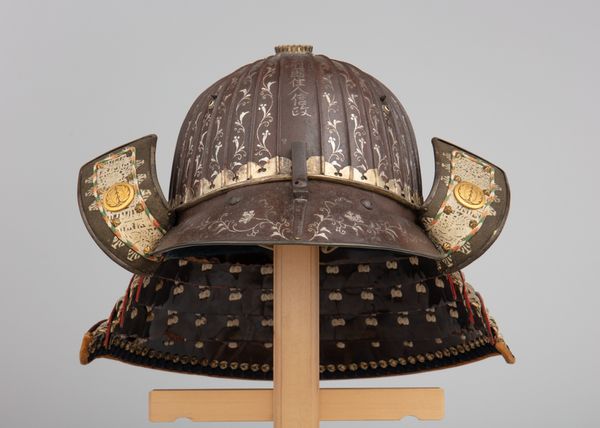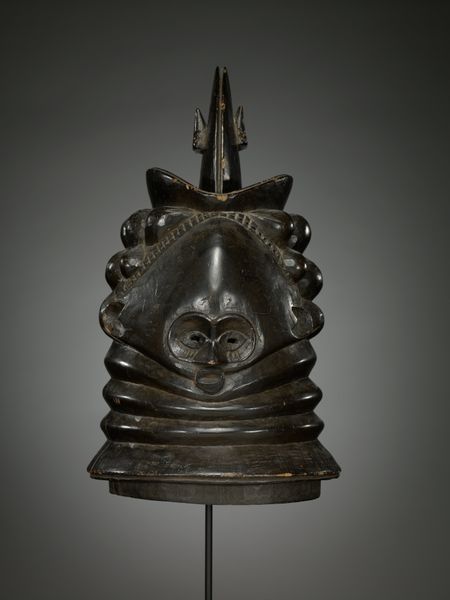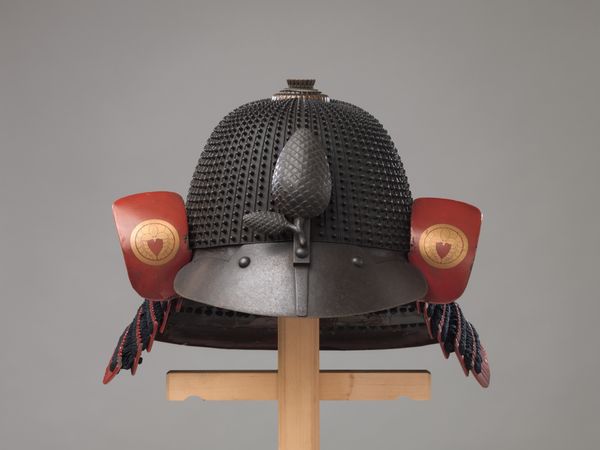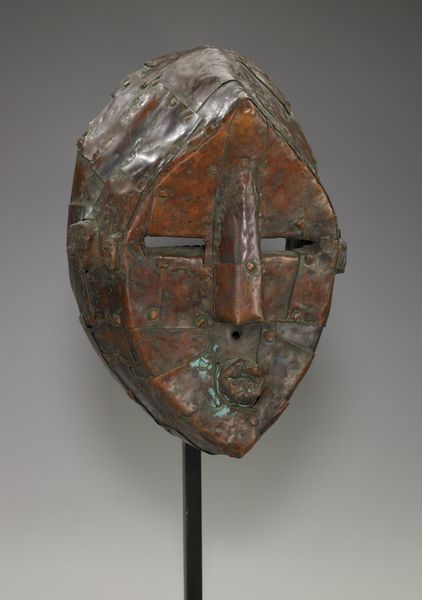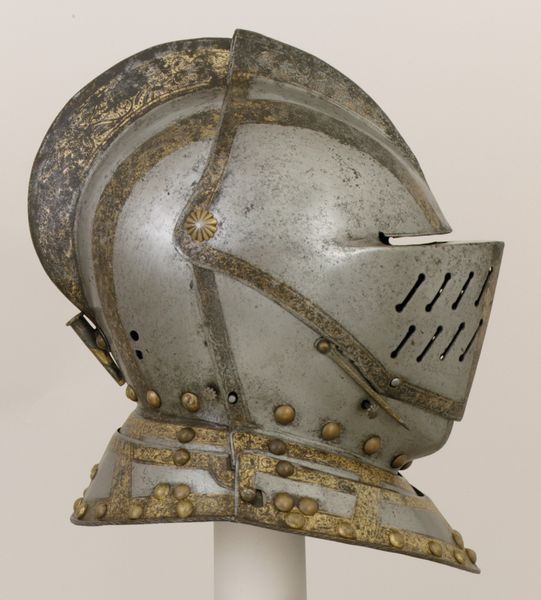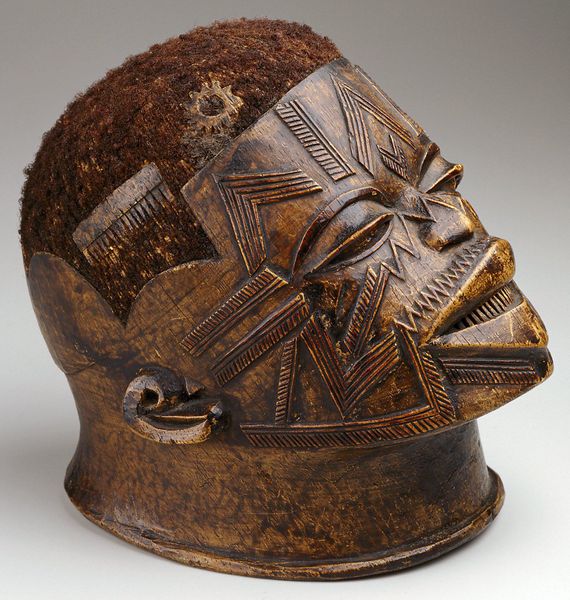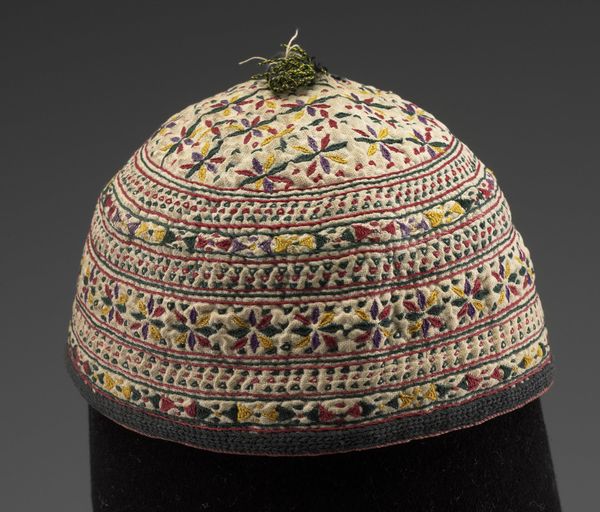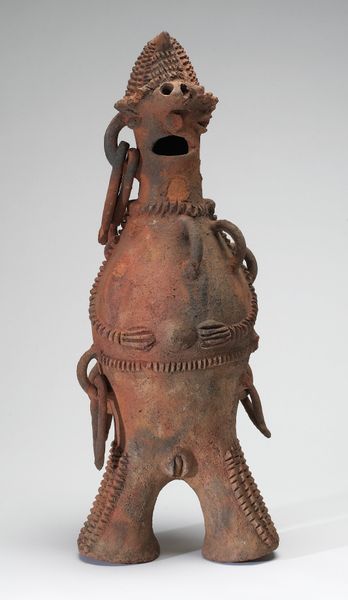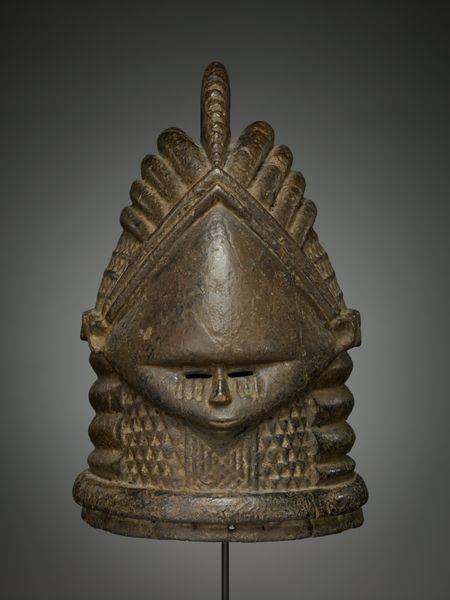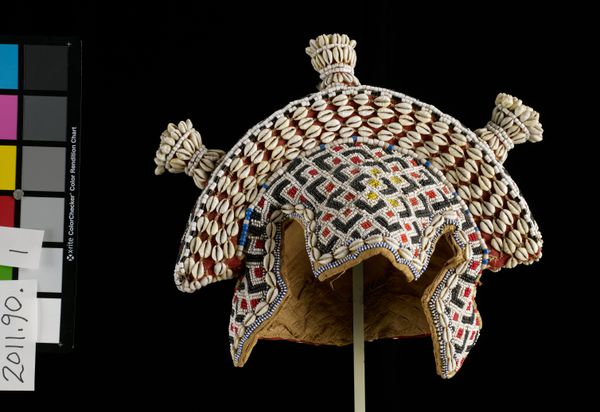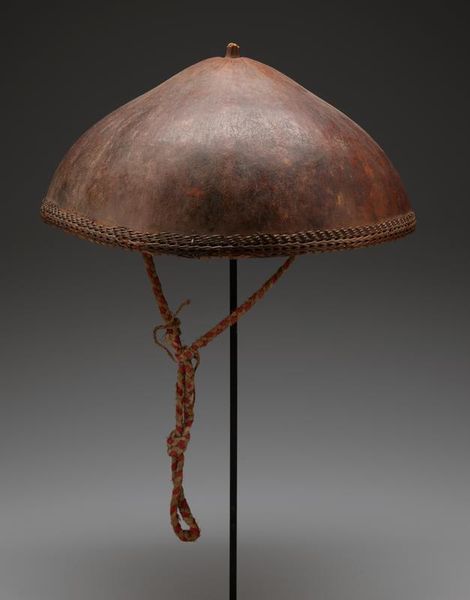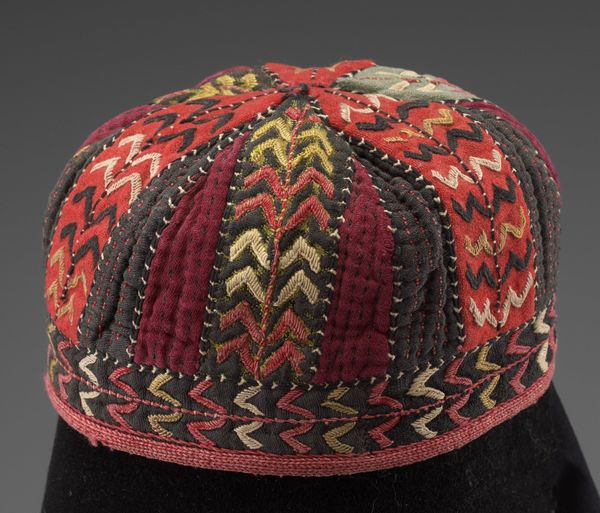
weaving, textile, cotton
african-art
sculpture
weaving
textile
cotton
Dimensions: 7 x 6 3/4 x 6 3/4 in. (17.78 x 17.15 x 17.15 cm)
Copyright: Public Domain
Editor: We're looking at a Headdress, dating from around the 20th century, created by the Bamileke people. It's made of textile and cotton. I'm struck by its sculptural quality and the rhythmic arrangement of the cylindrical forms. How do you interpret this work? Curator: I see a masterful exploration of texture and form. The contrast between the smooth red panel and the densely patterned, protruding elements is visually arresting. Note the concentric circles that move upwards and the balance the artist achieves, using the repetitive forms to create a unified whole, where one texture and one tone doesn’t overwhelm. How does the use of line contribute to your understanding? Editor: The lines created by the alternating light and dark bands seem to guide my eye upward, emphasizing the headdress's verticality and conical shape. Does the placement of these individual padded elements contribute to a kind of structural framework for the headdress itself? Curator: Precisely. The placement of each form and band appears deliberate. The structure itself, the visual effect of depth, it all calls attention to the craftsmanship, don't you agree? And further, considering the artist had complete command over their materials. It is not random. Editor: It does look incredibly intricate, especially up close. This attention to detail creates a very unique visual language and effect. Curator: Agreed. And these elements speak to their own artistic vision and accomplishment. I find the visual vocabulary very intriguing to decode and to analyze. Editor: It's fascinating how analyzing these basic elements reveals so much about the artist's intent and skill.
Comments
The ashetu - or prestige hat - is prevalent in the Grasslands of Cameroon. The large, blue and white burls are stiffened with wooden pegs and divided by concentric circles into two orange lobes on either side of the head. In this region, men once wore wrapped, tufted hairstyles to indicate their high social status. The projections on the ashetu mimic this hairstyle. Men wear prestige hats to ceremonies and rituals to express their standing and authority in the community. This headdress type is knitted or crocheted using vegetable fiber and appears in many variations. Artists also represent this style of hat, or hairstyle, in masks and sculptures.
Join the conversation
Join millions of artists and users on Artera today and experience the ultimate creative platform.
